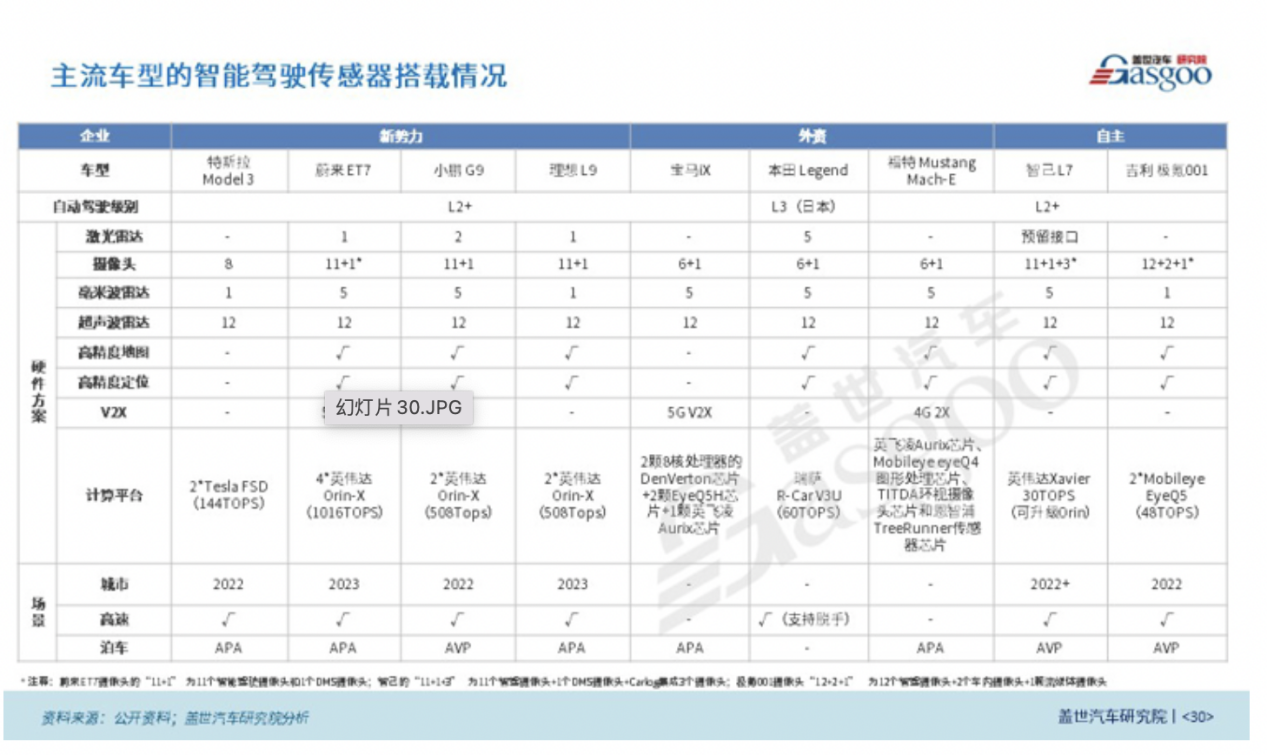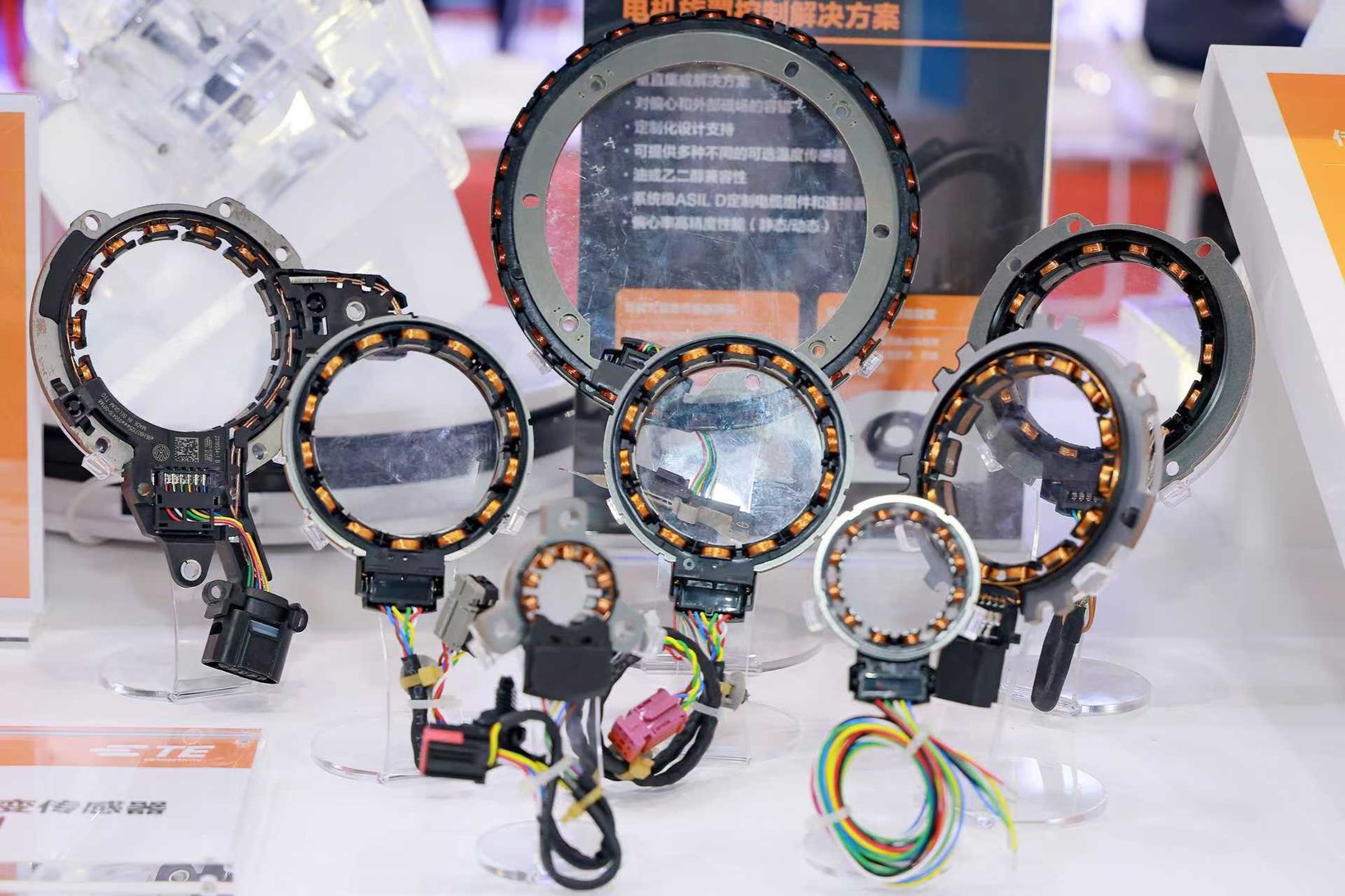As core components of vehicles, sensors play a crucial role. They monitor and transmit vehicle status information. This enhances performance and ensures safety. The demand for sensors in smart electric vehicles is rising rapidly. Companies compete to expand their offerings, driving new technological changes. In the context of intelligent electric vehicles, the automotive sensor market is entering a growth phase. Sensors fall into two main categories: body sensors and intelligent environment sensors. Traditional vehicles mainly use body sensors. These include temperature sensors, pressure sensors, speed sensors, current sensors, position sensors, and optical sensors. Environmental sensors primarily consist of cameras and radars.
Traditional fuel vehicles mainly used temperature, pressure, and angle sensors. The arrival of smart electric vehicles has disrupted sensors in both quantity and technology. First, the number and value of sensors per vehicle continue to rise. Smart features like air suspension, drive-by-wire braking, and electric power steering drive the demand for height sensors, acceleration sensors, position sensors, and torque sensors. In terms of electrification, thermal management increases the need for current, pressure, and temperature sensors. Additionally, battery safety requires more sensors for monitoring. Second, new smart components upgrade body sensor functions. Environmental sensors like onboard cameras, LiDAR, millimeter-wave radar, and ultrasonic radar are new additions for smart vehicles. As the demand for smart driving increases, the number of ultrasonic radars in new cars has grown from 3 to 5, 12, or even more.
The automotive sensor market has exploded in recent years due to increased quantity and functionality. According to CICC, the market in China is expected to reach 144.9 billion yuan by 2026, with a compound annual growth rate of 26.1% from 2021 to 2026. Driven by technology, companies accelerate their strategies. New market opportunities prompt leading domestic and international firms to expand rapidly. Many emerging companies also enter the market and achieve quick growth. What is the current state of the automotive sensor market? How do companies view the technology landscape and future trends? At the recent SENSOR CHINA 2024 exhibition, Gaishi Automotive visited several firms and spoke with key personnel. ● TE Connectivity: Opportunities Outweigh Challenges, Expanding Sensor Applications As a giant in the sensor industry, TE Connectivity has invested in technology for automotive electrification and intelligence. Their product development focuses on miniaturization, low power consumption, high precision, multidimensionality, and integration. During the exhibition, they showcased a high-precision rotary sensor designed for electric vehicle motors. This sensor accurately measures the motor’s phase angle. They also displayed a brake pressure sensor for electronic hydraulic braking systems, as well as seat position sensors and brake light sensors for safety applications.
In addition, Dai Bin, the sales and marketing director of Tyco Electronics Sensor Division in China, stated that the company explores other fields, such as drive-by-wire chassis. They already have products in research, testing, and even mass production. They also focus on smart cockpit applications, including safety-related seat sensors, and have begun developing corresponding products. “Many sensor technologies are extendable. Although applications may differ, the underlying technology is the same. TE sensors have nine major categories and 32 subcategories of core sensing technology, which can quickly expand to more applications,” Dai Bin said. Regarding the current automotive market, Dai Bin expressed, “China’s new energy vehicles are the most active in the world, and the market size is enormous. We often say that challenges are opportunities. As terminal products accelerate in iteration, customers’ product development cycles will shorten. This rapid product iteration means customers will present us with new project opportunities more frequently.” On the intensifying price war in the market, Dai Bin pointed out that cost optimization can provide direct benefits to users. However, technology can offer long-term benefits to customers. How to break through with technological innovation? The goal is to enhance sensor performance and increase safety in cars. This is the essence of competition. ● Naxinwei: Accelerating business, expanding in domestic and international markets Naxinwei, a leading company in high-performance and high-reliability analog and mixed-signal chips, has grown rapidly in recent years. Its financial report shows that Naxinwei shipped over 100 million automotive chips in 2022. In 2023, shipments reached 164 million. By mid-2024, shipments already exceeded 133 million. Naxinwei focuses on three main types of sensors: magnetic sensors, pressure sensors, and temperature and humidity sensors. These cover automotive powertrain systems, thermal management systems, domain control systems, body electronics, and smart cockpits. During the exhibition, the company showcased many innovative products. In the magnetic sensor category, they presented the high-bandwidth integrated current path sensor NSM211x and a new series of magnetic switches, including programmable automotive switches and ultra-low power TMR switches. They launched new pressure sensors to help automotive companies meet National VI regulations. The NSPAS5N series absolute pressure sensors excel in corrosive environments. The NSPGL1 series integrated differential pressure sensors perform competitively in fuel vapor applications.
Zhao Jia, the product line director at Naxinwei, spoke to Gaishi Automotive. He highlighted two main factors behind the company’s rapid growth. First, the emergence of market opportunities and the trend of domestic chip production. Second, the company’s long-term innovation in technology and products. They released the right products at the right time, seizing the initiative. In 2023, the company invested 520 million yuan in research and development, nearly 40% of its revenue. Zhao also acknowledged the challenges posed by fierce competition in the automotive industry. Two main challenges exist. First, the complexity of automotive architecture complicates product definition and innovation for chip companies. Rapid market changes demand strong product development capabilities. Companies must also keep pace with system application trends. For example, clients now require higher precision, better performance, and more functional safety redundancy in sensors. Meeting these multiple demands increases pressure on chip companies, as they must balance product quality and cost control. Second, client system applications are evolving quickly. Companies must deepen their understanding of these applications. They need to offer solutions and products that truly address client pain points. By consistently delivering exceptional products and services, companies can gain an edge in the competitive market. To enhance competitiveness, Naxinwei strengthens product research and development. It builds core capabilities to improve overall competitiveness. The company continuously develops its quality management system, enhances cost control, builds a talent pipeline, and creates platform-based technology IP. Naxinwei also explores new product application areas. It considers fields like humanoid robots, low-altitude economy, and AI sensing. The overseas market is a key expansion point. Naxinwei has established subsidiaries in Germany, Japan, South Korea, and the United States. By the first half of 2024, about 15% of the company’s revenue will come from overseas. “Leading global chip companies must operate in global markets. They cannot rely on a single regional market to become global leaders. Based on this, Naxinwei made a firm decision for globalization years ago,” Zhao Jia added. Suzhou Yiboda focuses on strengthening its advantageous products. Established in 2021, it specializes in MEMS design, manufacturing, testing, and multi-sensor fusion system integration. Despite its short history, the company has rapidly advanced in product development. Its accelerometers, gyroscopes, inertial measurement units, high-precision navigation systems, and tilt sensors are recognized in markets for applications in autonomous driving, electronic stability control, anti-lock braking systems, and airbag deployment systems. High-precision MEMS inertial sensors face significant technical barriers. They encounter challenges in product design, manufacturing technology, and process stability. The company has spent considerable time iterating and improving. They have successfully overcome these technical issues. They developed high-precision accelerometer and gyroscope chips. Tang Huhai, sales director of Yiboda, discussed current technology trends. He noted that sensor technology is evolving. It is integrating innovation and expanding applications. The focus is on intelligence, standardization, and enhancing data security and privacy. These trends promote the widespread adoption of sensor fusion technology. For tech startups, internal development is crucial. They must strengthen R&D and enhance competitiveness and risk resilience. “No matter how the market changes, every company must have core competitiveness,” Tang said. “We need to refine our internal capabilities and excel in accelerometer and gyroscope chip development. The market has a technical threshold, and there aren’t many domestic manufacturers. We must seize the opportunity.” Dongchao Technology takes a unique approach. Their aerial imaging technology has been implemented. Founded in 2016, Anhui Dongchao Technology focuses on aerial imaging. Their interactive aerial suspension imaging technology has reached the automotive sector. It can be installed above or below the center console, on the back of front seats, in the rear center armrest, and on the sides of door handles. It provides imaging and delivery capabilities. The in-car assistant hovers in front of the center console. Users can interact with it. They can use voice, touch, or gestures.
“Principally, any scene that requires display or interaction could be replaced by interactive aerial imaging technology,” said Liu Hong, head of the Dongchao Technology Regulatory Center. Regarding potential delays in commands, Liu noted that the unilateral infrared sensor used for imaging differs from the depth camera. The depth camera requires significant computing power, while the infrared sensor demands very little. Its positioning accuracy is very high, almost zero latency. On costs, Liu mentioned that few companies are involved in aerial imaging, so prices are not very competitive yet. The focus is primarily on technology: First, high positioning accuracy and scanning frequency are essential. Second, the lens must provide high imaging quality. Dongchao Technology is collaborating with over a dozen manufacturers to develop a complete range of in-car products. Several models featuring floating digital sprites will enter production, with an expected annual output of 300,000 to 500,000 units. In summary, the technological transformation in the automotive industry presents new opportunities for the sensor sector. It reshapes the market landscape and drives technological breakthroughs. Both domestic and international giants, as well as newcomers, are refining niche areas and enhancing technological innovation to gradually expand their markets and channels. Amid this overall momentum, the sensor market is poised for a new blossoming.




